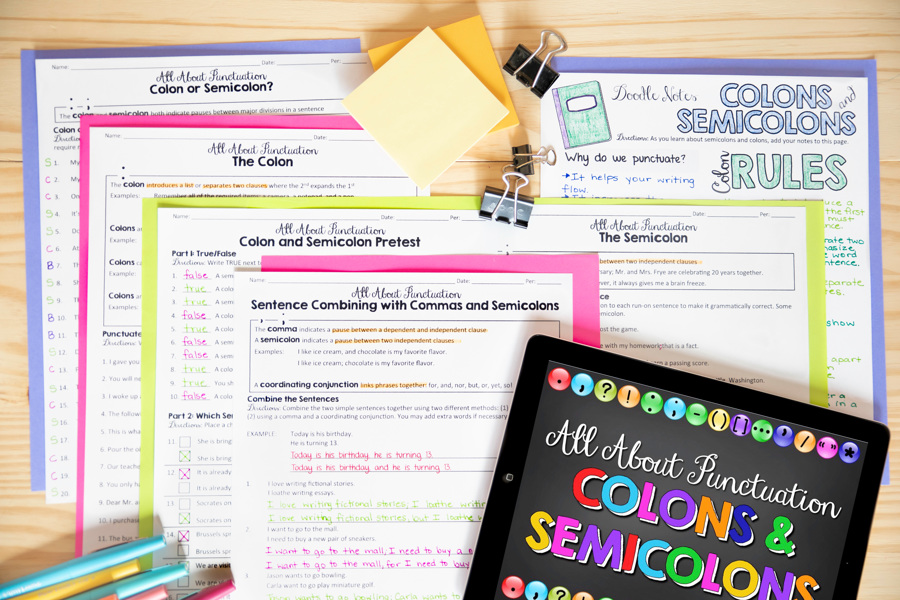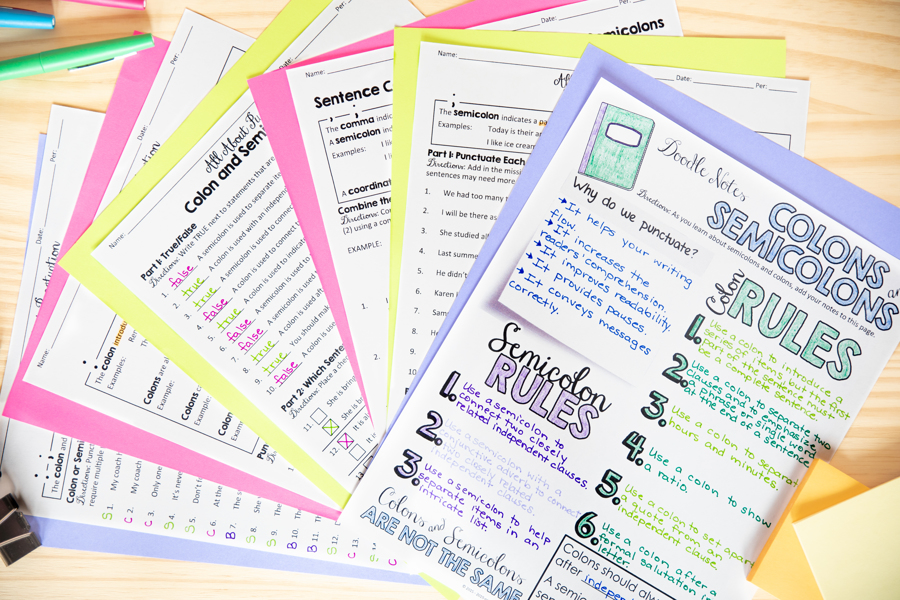An integral part of teaching English and assigning writing is teaching students about essential punctuation. When it comes to punctuation, colons and semicolons are particularly tricky for middle school ELA and high school English students. When I teach my students about colons and semicolons, I use this teaching resource: All About Punctuation: Colons and Semicolons.
 |
| All About Punctuation: Colons and Semicolons |
Here are some helpful tips for teaching punctuation in the secondary ELA classroom.
The colon
It’s not just an organ, folks! In writing, colons help clarify sentences by separating a statement from additional clarifying information. Colons can really help the structure of the sentence flow. Here are a few different ways to use a colon!
Lists
- Ex. I bought lots of vegetables at the store: carrots, potatoes, broccoli, and onions.
Emphasis
By using a colon to join a full sentence with an explanatory noun or phrase, the writer indicates to their reader that the following phrase is important.
- Ex. There was just one problem: my crippling anxiety.
Introducing a Quote
Use a colon to precede a very lengthy quote – especially if the quote is a full sentence.
- Ex. Maya Angelou often speaks about her goals regarding her own self-growth and happiness: “My mission in life is not merely to survive, but to thrive; and to do so with some passion, some compassion, some humor, and some style.”
*Note: If using MLA, APA, or Chicago format, do NOT capitalize the first letter of the word following the colon. (This rule does not apply to quotations or proper nouns.)
 |
| All About Punctuation: Colons and Semicolons |
The semicolon
Students of all ages love using this punctuation mark to look smart and help their papers flow, but they need to use it right! Unlike its fraternal twin, the colon, a semicolon cannot be used to join a complete sentence and a sentence fragment. A semicolon is only appropriate to use if the writer is joining two complete sentences, usually ones that are related to each other. In this way, a semicolon can replace your everyday “and” or “but”. Here are some examples of the correct use of a semicolon!
- Ex. I’m not sure how to do this problem; I never took Calculus.
- Ex: My sister is a professional athlete; my brother trips going down the stairs every morning.
- Ex: My dog is very large; he comes up to my hip without standing on his hind legs.
*Note: If using MLA, APA, or Chicago format, do NOT capitalize the first letter of the word following the semicolon. (This rule does not apply to quotations or proper nouns.)
Teaching Resource:
All About Punctuation Teaching Unit



